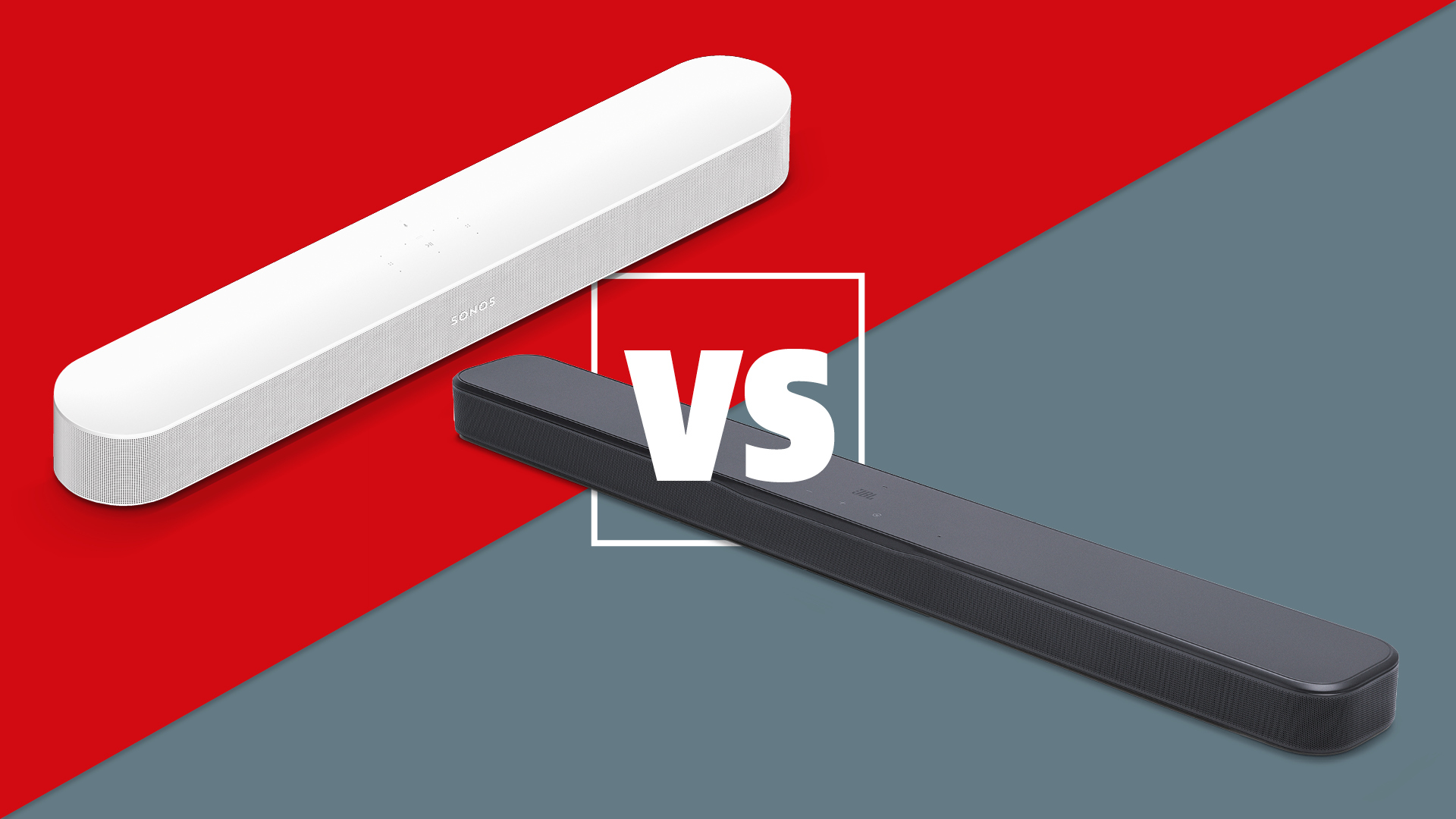Sound+Image Verdict
Sony’s STR-DH790 is a sensibly-equipped receiver for someone seeking entry-level surround at this level.
Pros
- +
Good sound performance
- +
Bluetooth with AAC
- +
Lowish entry cost
Cons
- -
Spring-clip speaker terminals
- -
Not rated to drive four-ohm loudspeakers
- -
No networking or AM
Why you can trust What Hi-Fi?
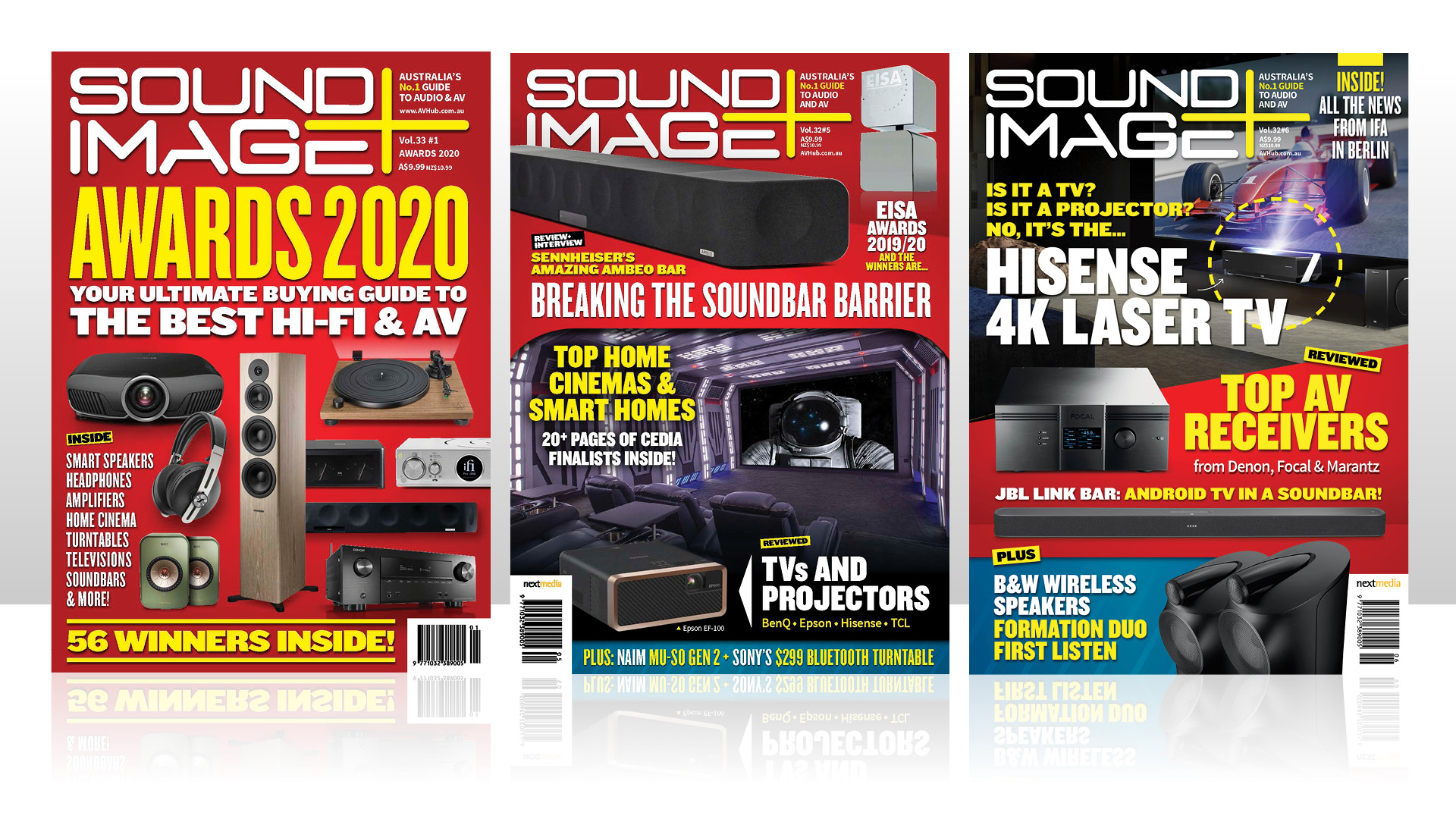
This review originally appeared in Sound+Image magazine, one of What Hi-Fi?’s Australian sister publications. Click here for more information on Sound+Image, including details on how you can subscribe. [The STR-DH790 is distributed in Australia by Sony.]
While we spend much of our time basking in the glories of mid to high-end gear (hey, I’ve just packed up and returned nearly AU$40K-worth of Trinnov gear!), we can get equally excited about the value on offer from stuff that’s closer to entry-level. Sony produces equipment covering just about as wide an affordability gamut as any company, and this STR-DH790 is one step up from its latest base-level DH590 AV receiver.
So let’s see what features have been selected for inclusion and exclusion, given the price-point of £350 ($299.99, AU$849).
Equipment
The box is marked with a headline power specification of 145W × 7, which sounds impressive (and is up from the 140W of the previous model). But of course power ratings are complex things. This figure is something called the ‘Reference Power Output’, measured into six ohms at 1kHz and allowing THD of 0.9%. For better comparison purposes I’d go with a different provided measure: 90W per channel across the full audio bandwidth into 6 ohms at 0.09% THD, two channels driven. That would mean an output of around 67W per channel into eight ohms, or perhaps a touch more given the reduced current demands.
There are seven channels and they are organised with sufficient flexibility to allow you to bi-amp the front stereo pair of speakers, or to drive rear surround or a pair of height speakers for Dolby Atmos and DTS:X, both of which are supported.
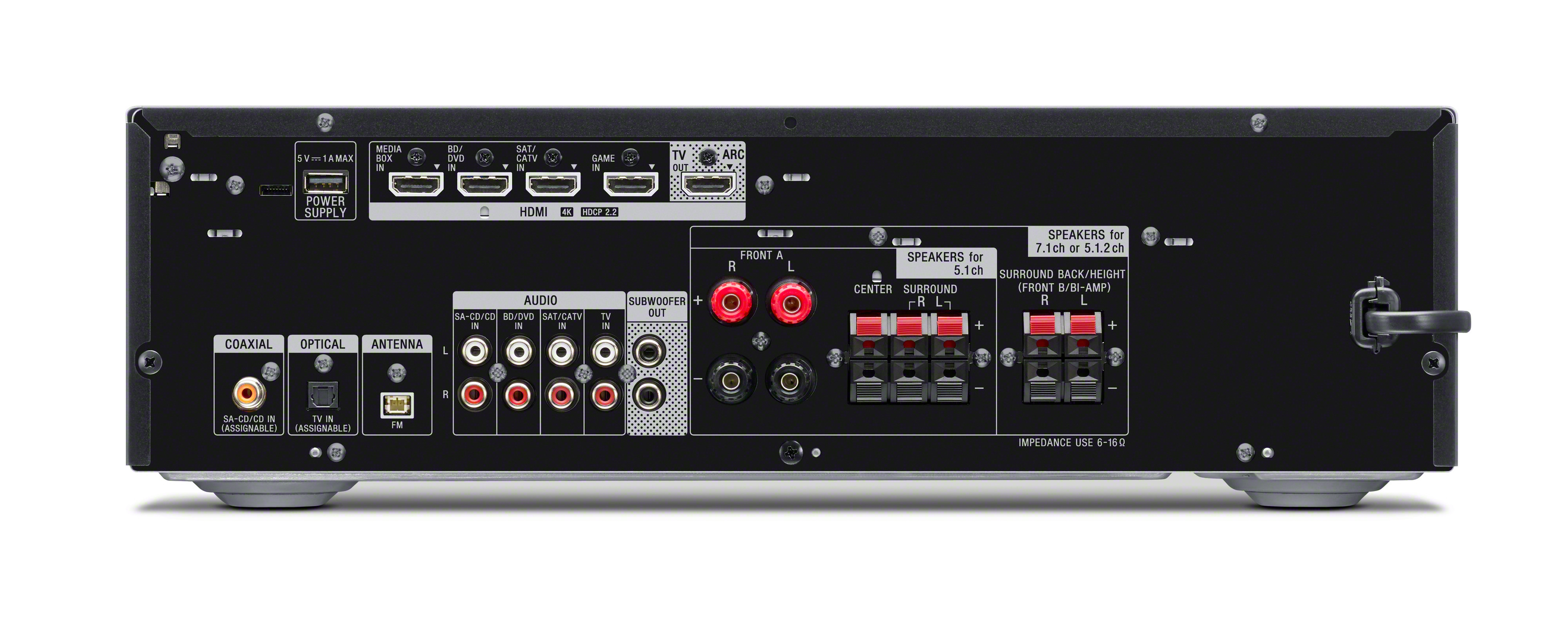
There are couple of compromises. First, you’d need to stick with speakers of at least six ohms nominal impedance in order to protect your warranty. Four-ohm speakers are not supported. Second, all but the front left and right channels use spring-clip connections, not binding posts. They accept cable up to about 1.5mm thick, but we think this is a step too far in economy.
There are four HDMI inputs, all supporting all the good stuff you’d expect. According to the specs (Sony rarely skimps on specifications) they support up to 4K and UHD at up to 60Hz, HDR10, Hybrid Log-Gamma and Dolby Vision, 3D, Deep Colour, the BT.2020 colour space, and the all-important HDCP 2.2 copy protection system. There’s a single HDMI output.
There are no analogue video connections of any kind, but four stereo analogue audio inputs, as well as one coaxial and one optical digital audio. So not a generous collection, but enough to cover the requirements of most systems, and more than enough for most entry and middling systems. There’s also a proper 6.35mm headphone socket on the left of the front panel.
The latest hi-fi, home cinema and tech news, reviews, buying advice and deals, direct to your inbox.
Not included with this receiver are some things that those used to higher-cost gear might expect. There is no support for a second zone. There is no support for media from USB (however there is a 5V/1A power supply in the form of a USB socket so you can power a phone or iPod plugged in via an analogue input).
And notably there is no support for networking at all, either Wi-Fi or Ethernet. However there is Bluetooth, which may be far more important for those seeking a receiver at this price point. It supports the AAC codec, so most Apple device users should get the best Bluetooth sound possible. It doesn’t support aptX, nor Sony’s LDAC.
So... is the lack of network support a deal breaker? I say no. Most networky things AV receivers do can also be done by far less expensive Blu-ray and UHD Blu-ray players. And, indeed, I used Sony’s latest AU$349 UBP-X700 Ultra-HD Blu-ray player with this unit, and they effectively worked as one device (see panel below).
Further, much of the networking stuff may be duplicated in your TV — especially given that Sony’s own models (such as our award-winning KD65-A1 OLED) favour the Android interface which is absolutely born to network. We didn’t have the A1 to hand, but for Netflix I used the Netflix app on an LG OLED TV and had it deliver the sound to the Sony receiver via the HDMI cable using the Audio Return Channel. This arrangement worked almost as seamlessly.
The two-prong power cable is of modest thickness and is fixed. A stubby Sony infrared remote is provided. There is, of course, no app or network control available.
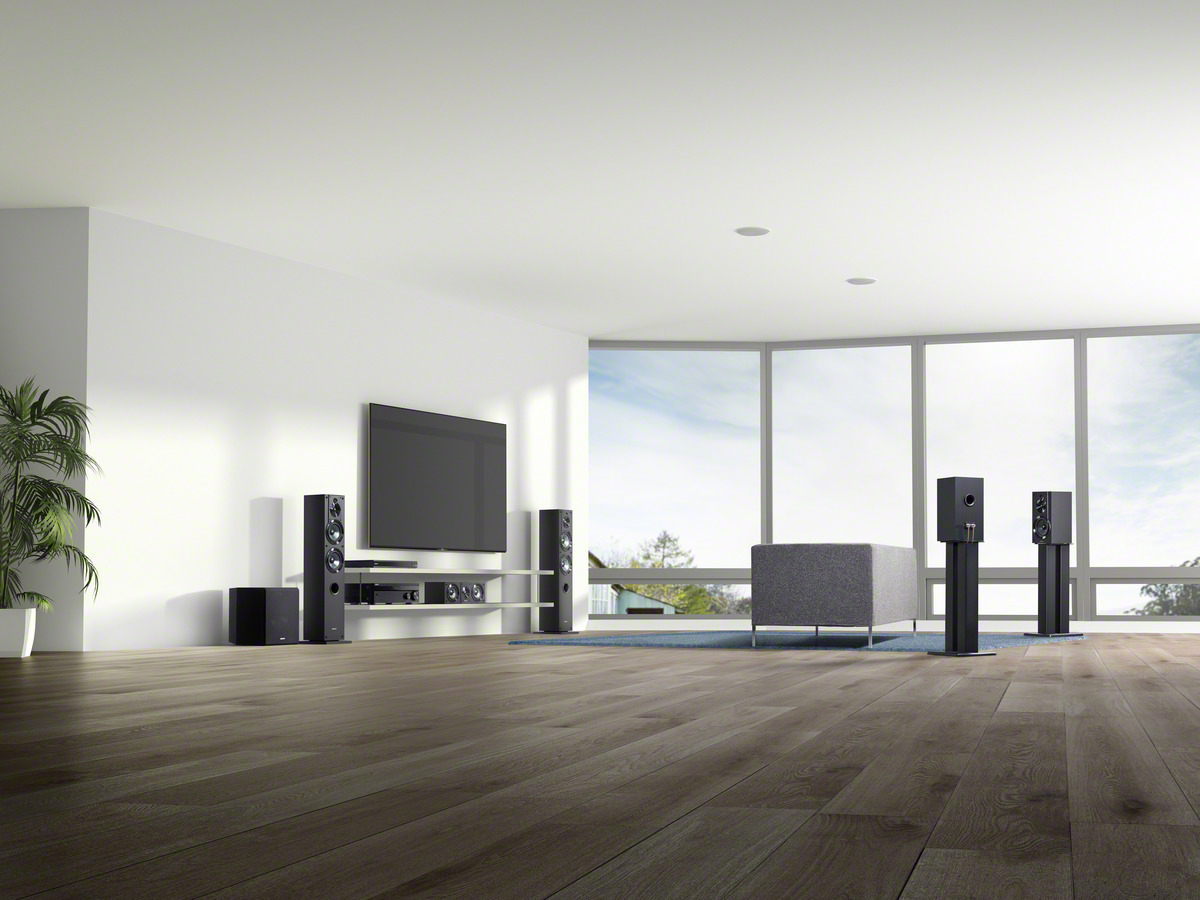
Performance
When you start up the receiver it presents a kind of basic user menu across the screen of your TV. This can overlay whatever video signal is being throughput, even UHD HDR BT.2020 stuff, and it can be invoked at any time with the ‘Home’ key. The four options are ‘Watch’, which lets you choose one of the four HDMI inputs, ‘Listen’, which lets you choose from Bluetooth, the FM tuner (there is no AM tuner) and SA/CD analogue or digital, ‘Easy Setup’ which invokes a settings wizard, the inappropriately-named ‘Sound Effect’, and ‘Speaker Settings’ which allows manual adjustments to speaker settings.
The receiver comes with a calibration microphone for the auto-calibration system, which sets speaker sizes, levels, distances and EQ. This was fast and easy to use, and involves putting the included microphone in just one position. There was no check step at the end, so after it had finished I went to the ‘Speaker Settings’ and found that while the levels and distances seemed to be right, the speakers had all been set to ‘Large’, even the ceiling speakers. These two-way 8-inch Jamo models are very competent as far as ceiling speakers go, but I really don’t want them (nor any of my other speakers) trying to handle 20Hz signals. So I tweaked those settings manually.
Most of the sound-field settings ended up with a rather strong bass, much higher than that normally provided by AV receivers. Who does it right? Yamaha, Denon, Marantz on the one hand, with a more subdued subwoofer level, or Sony on the other hand, with one that’s at least six decibels higher? I brought down the bass level a little, but really, let your subwoofer’s capacity, your own taste and your neighbours’ complaints determine the optimum level for you.
So what about that ‘Sound Effect’ entry in the ‘Home’ menu? No, it didn’t generate party noises. It lets you change important things. You use it to set the ‘Sound Field’ — choose things like Dolby Surround, Neural-X, Front Surround, ‘Audio Enhancer’ (yuck), Stereo, Multi-channel Stereo and Direct. Each entry had a useful little description on screen to tell you what it does. The plethora of surround and processing modes can be daunting, so for anyone not thoroughly versed in all this stuff, this is an important feature.
Also in ‘Sound Effect’ is a ‘Night Mode’, an ‘Equalizer’ (actually, bass and treble controls) for each channel pair, and ‘Calibration Type’ from which you can choose ‘Engineering’ (the default), ‘Front Ref’, ‘Full Flat’ or ‘Off’. This sets the reference which the auto EQ curves seek to approximate. ‘Front Ref’ is for those who like their front speaker sound relatively unprocessed and want the other speakers to conform, tonally, to them. ‘Engineering’ makes the sound match “the Sony listening room standard frequency characteristics”. (I got that from the online manual. The information you need is split between the printed one in the box and the online manual.) Finally, in ‘Sound Effect’ is a Pure Direct setting.
An ‘Options’ key invokes another on-screen menu offering things like AV sync and further soundfield changes, while an ‘Amp Menu’ button brings up a menu on the front-panel display. Initially I was thinking Sony had stepped back by a decade to how things used to be done, adjusting while peering at the display on a receiver, but it turns out that most of the settings merely duplicate things available in the on-screen menus. And since most are adjustments for sound — like speaker levels and so on — the Amp Menu could be useful at times when you’ve not got the TV switched on. (Although some of the non-duplicated things were HDMI settings and so on.)
There were some wrinkles with the HDMI equipment I used. Specifically, neither of my Beyonwiz PVRs would work with the HDMI input labelled BD/DVD. Both worked perfectly with the Game and Media Box inputs. The Beyonwiz T4 also worked with the SAT/CATV input, but while the picture came through from the T3 on that one, the sound wouldn’t. I tried different HDMI cables. Who knows what was going on there. The BD/DVD input worked fine with the Sony disc player (above) and my own selection of UHD and Blu-ray players. A useful button on the remote displays video and audio signal information on the screen, so you’ve got some information to work with.
And sound? I installed my speakers as a basic 5.1.2 Dolby Atmos layout. As I’ve remarked before, the difference for one listener between two overhead speakers and four seems to be minimal. And the speakers I was using weren’t demanding. The Sony auto-calibration did a good job tonally with the sound. And I was able to just enjoy some really classy results. When it came time for me to watch Blade Runner 2049 on Ultra-HD, I was tempted to go back to a very immoderately priced receiver, but I persisted. This receiver did the job very thoroughly. The sound engineers had obviously enjoyed their time at the surround mixing panel, using the Atmos object-oriented capabilities to have Ryan Gosling’s flying car zoom in from my left shoulder, overhead and to slightly right of centre up front. Could it have been done better by a more expensive system? Oh, I guess, but it happens fast and it happened convincingly via the Sony.
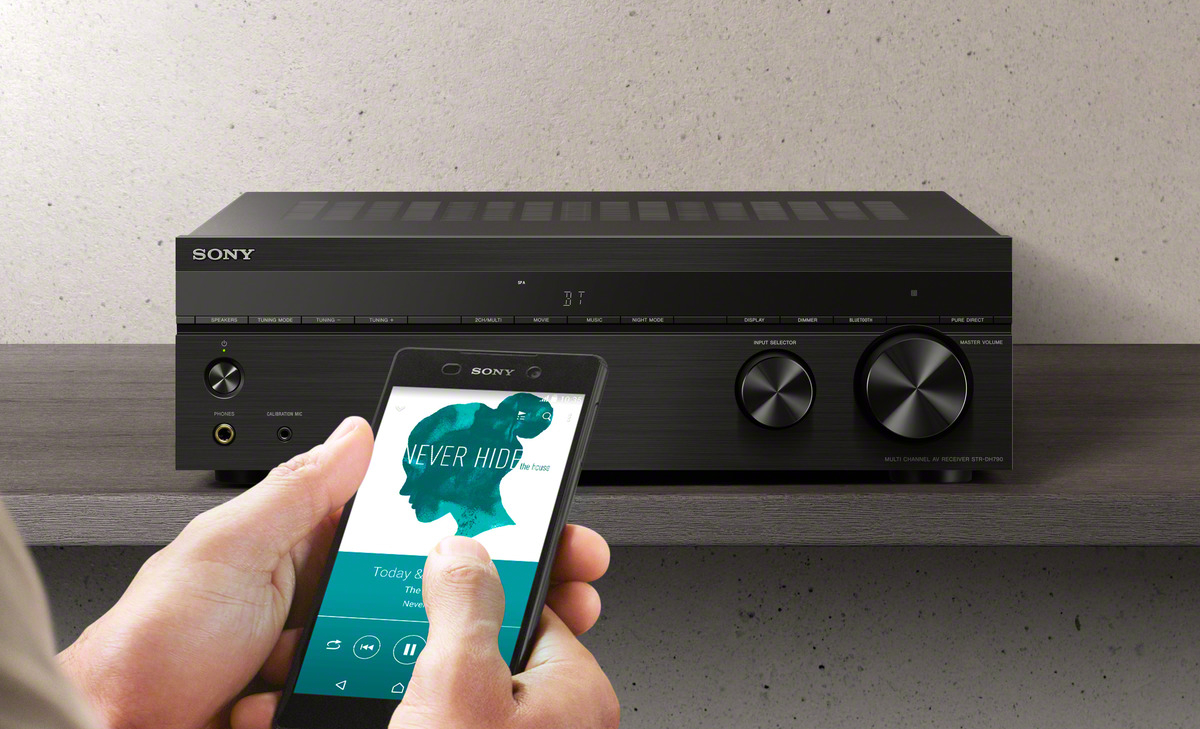
As for music, again the results were very strong so long as I remained within the capabilities of the receiver and used speakers suited to it. And switched the sound of stereo music to ‘Stereo’ or ‘Direct’ or to ‘Pure Direct’, rather than the silly ‘All Channel Stereo’ default.
Can you cheat and go with four-ohm speakers if you already have them? We would never recommend that you do, of course. But if you must, then just be cautious with levels.
And I must report my experience. I didn’t use four-ohm speakers, but at one point I had a small accident with the speaker wiring, thanks to adapting my substantial speaker cables to spring-clip speaker outputs. There was a short when a cable slipped out. I am happy to report that there was no drama. The sound stopped. The receiver reported briefly on its front panel display something about overload and protection, and then switched itself off. I checked and fixed the wiring situation and then switched it back on. I had to use the front panel on/standby button since the one on the remote — a sensible bit of design this — wouldn’t work straight after protection had been activated. The receiver came straight on and was ready to go. There was no sound still, but then I realised that the receiver had also turned the volume down to zero. Another good bit of design — some people encountering such a switch-off might just switch it back on with no further investigation. With the volume back up, all was just as it had been before. Good engineering Sony!
Verdict
If the inputs suffice and the spring-clips don’t deter, then Sony’s STR-DH790 is a sensibly-equipped receiver suitable for someone seeking surround at this level, and especially so in combination with other Sony gear.
Sound+Image is Australia's no.1 mag for audio & AV – sister magazine to Australian Hi-Fi and to the UK's What Hi-Fi?, and bestower of the annual Sound+Image Awards, which since 1989 have recognised the year's best hi-fi and home cinema products and installations. While Sound+Image lives here online as part of our group, our true nature is best revealed in the print magazines and digital issues, which curate unique collections of content each issue under the Editorship of Jez Ford, in a celebration of the joys that real hi-fi and high-quality AV can bring. Enjoy essential reviews of the most exciting new gear, features on Australia's best home cinemas, advice on how to find your sound, and our full Buying Guide based on all our current and past award-winners, all wrapped up with the latest news and editorial ponderings. Click here for more information about Sound+Image, including links to buy individual digital editions and details on how best to subscribe.


